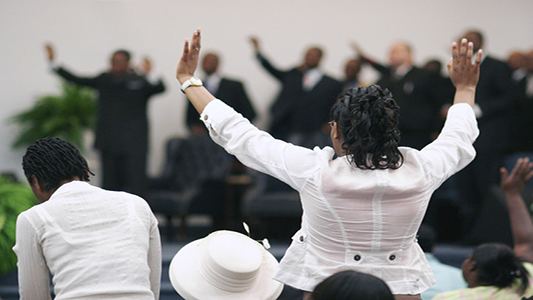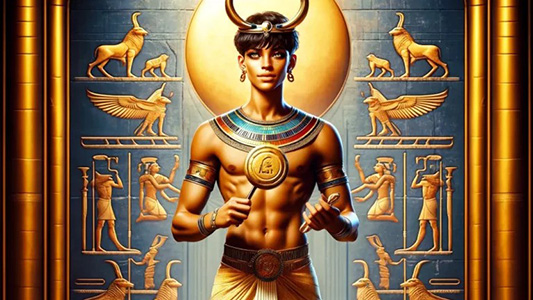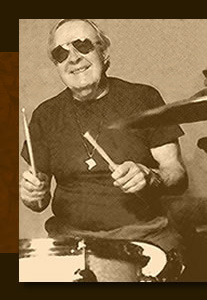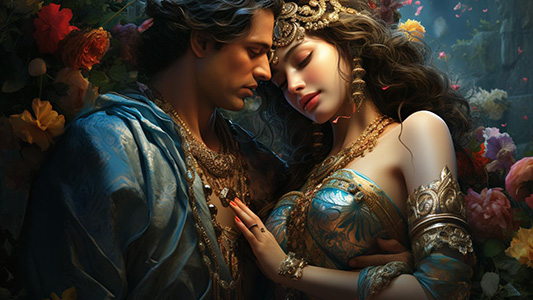Sacred music has always played a crucial role in religious practices across the world, serving as a medium for expressing devotion, reverence, and spiritual connection. When we think of sacred music, our minds often drift toward the hymns and chants of Western traditions. However, the spiritual music dedicated to Eastern deities is equally rich, complex, and powerful. This genre of music, which spans various cultures and religious practices, offers a unique blend of melodic beauty, rhythmic complexity, and deep spiritual meaning. In this article, we will delve into the essence of sacred music about Eastern deities, exploring its origins, its role in religious rituals, and the profound impact it has on devotees and listeners alike.
The Origins of Sacred Music in Eastern Traditions
Discover the profound impact of sacred music dedicated to Eastern deities. Explore how this spiritual music transcends cultural boundaries and enhances religious devotion.
Ancient Roots and Cultural Significance
The origins of sacred music dedicated to Eastern deities can be traced back thousands of years. This music is deeply rooted in the ancient religious traditions of Asia, including Hinduism, Buddhism, Jainism, and various forms of animism and folk religions. In these traditions, music is not merely an artistic expression but a form of communication with the divine. It is believed that music has the power to invoke the presence of deities, create a sacred atmosphere, and elevate the spiritual state of the participants.
The Role of Sacred Texts and Scriptures
Many pieces of sacred music in Eastern traditions are derived from holy scriptures and sacred texts. For example, in Hinduism, the Vedas and Upanishads provide the basis for many hymns and chants dedicated to gods like Vishnu, Shiva, and Devi. Similarly, Buddhist chants often draw from the sutras, reciting the teachings of the Buddha in a melodic and rhythmic manner. These texts are not only recited but also sung, often in a group setting, creating a powerful collective experience of devotion and spiritual upliftment.
Characteristics of Sacred Music Dedicated to Eastern Deities
Melodic structures and ragas is the one of the most distinctive features of sacred music in Eastern traditions is the use of specific melodic structures, known as ragas in Indian classical music. A raga is more than just a melody; it is a framework for improvisation and emotional expression, designed to evoke specific feelings and moods. Different ragas are associated with different times of the day, seasons, and deities. For example, the raga Bhairav is often used in morning prayers and is associated with Lord Shiva, while the raga Yaman is used in evening rituals dedicated to various deities.
Rhythmic Complexity and Tala
Alongside melody, rhythm plays a crucial role in sacred music. The rhythmic patterns, known as tala, are often complex and intricate, reflecting the cycles of nature and the cosmic order. The interplay between melody and rhythm creates a dynamic and immersive musical experience, drawing the listener deeper into the spiritual context. In many Eastern religious ceremonies, the tala is maintained by traditional instruments like the tabla or mridangam, providing a steady, grounding presence throughout the performance.
Use of Chanting and Mantras
Chanting is a central component of sacred music dedicated to Eastern deities. Mantras, which are sacred syllables or phrases, are chanted repeatedly as a form of meditation and invocation. The repetition of mantras creates a sonic vibration that is believed to align the mind, body, and spirit with the divine. In Hinduism, the chanting of “Om Namah Shivaya” is a common practice to honor Lord Shiva, while in Buddhism, the chant “Om Mani Padme Hum” is used to invoke the compassion of Avalokiteshvara, the Bodhisattva of Compassion.
Instrumentation in Sacred Music
The instruments used in sacred music dedicated to Eastern deities are often chosen for their symbolic significance and their ability to produce specific sound frequencies. Instruments like the sitar, veena, bamboo flute, and harmonium are commonly used in Hindu devotional music, while the singing bowl and bell are integral to Buddhist practices. These instruments are not just tools for music-making; they are considered sacred objects that carry the spiritual vibrations of the music they produce.
The Role of Sacred Music in Religious Rituals

Enhancing devotional practices is sacred music is an essential part of many religious rituals in Eastern traditions. Whether it is the morning prayers (puja) in a Hindu temple, the chanting of sutras in a Buddhist monastery, or the singing of bhajans (devotional songs) in a communal gathering, music is used to enhance the spiritual atmosphere and deepen the connection between the devotees and the deities. The act of singing or listening to sacred music is itself considered a form of worship, a way to express love, devotion, and surrender to the divine.
Creating a Sacred Space
One of the primary functions of sacred music is to create a sacred space, both physically and mentally. The vibrations of the music are believed to purify the environment, drive away negative energies, and invite the presence of the deity. This is why music is often played during the consecration of temples, the installation of idols, and other important religious ceremonies. The music sets the tone for the ritual, signaling to the participants that they are entering a sacred, divine space.
Facilitating Meditation and Trance States
In many Eastern traditions, sacred music is used as a tool for meditation and achieving altered states of consciousness. The repetitive patterns of melodies, rhythms, and chants help to quiet the mind and focus the attention on the divine. In some practices, such as the chanting of the Gayatri Mantra in Hinduism or the recitation of the Heart Sutra in Buddhism, the music is specifically designed to facilitate deep meditation and connect the practitioner with higher spiritual realms.
Sacred Music and Its Impact on Devotees
Emotional and spiritual upliftment of one of the most profound impacts of sacred music is its ability to uplift the emotions and spirit of the listener. The beauty and power of the music can evoke feelings of love, peace, and bliss, helping devotees transcend the mundane and connect with the divine. This emotional response is not just a byproduct of the music; it is the very purpose of it. Sacred music is intended to open the heart and soul to the presence of the deity, creating a direct and personal experience of the divine.
Community and Collective Worship
Sacred music also plays a crucial role in fostering a sense of community and collective worship. In many Eastern traditions, music is performed in a group setting, with everyone participating in the singing or chanting. This creates a powerful collective energy, amplifying the spiritual impact of the music. Whether in a temple, monastery, or a community hall, the act of making music together strengthens the bonds between the participants and reinforces their shared devotion to the deity.
Healing and Transformation
In addition to its spiritual benefits, sacred music is also believed to have healing properties. The vibrations of the music, especially when combined with the recitation of mantras, are thought to harmonize the body, mind, and spirit, promoting physical and mental well-being. In some traditions, specific ragas or mantras are prescribed for healing certain ailments, reflecting the belief that music has the power to transform not just the spirit but also the body.
Famous Pieces of Sacred Music About Eastern Deities
 “Sri Rudram” – Hymns to Lord Shiva
“Sri Rudram” – Hymns to Lord Shiva
“Sri Rudram” is one of the most powerful and revered hymns in Hinduism, dedicated to Lord Shiva. It is part of the Krishna Yajurveda and is often chanted during religious ceremonies and rituals. The hymn praises Shiva as the supreme deity and seeks his blessings for peace, prosperity, and spiritual enlightenment. The melodic chanting of “Sri Rudram” is believed to purify the mind and soul, creating a deep connection with the divine.
“Om Mani Padme Hum” – The Mantra of Compassion
“Om Mani Padme Hum” is one of the most famous mantras in Buddhism, associated with Avalokiteshvara, the Bodhisattva of Compassion. The mantra is chanted by millions of Buddhists around the world as a prayer for compassion and enlightenment. The melodic repetition of this mantra, often accompanied by the sound of bells or singing bowls, creates a serene and meditative atmosphere, invoking the presence of the Bodhisattva.
“Bhajans” – Devotional Songs to Hindu Deities
Bhajans are devotional songs that praise various Hindu deities, including Krishna, Rama, Durga, and Hanuman. These songs are often simple in structure but rich in emotional expression, allowing devotees to express their love and devotion through music. Bhajans are typically performed in groups, with everyone participating in the singing, clapping, and playing of instruments like the harmonium and tabla.
Modern Interpretations and Global Influence
In recent years, there has been a growing trend of blending Eastern sacred music with Western musical elements, creating a unique fusion that appeals to global audiences. Artists like Ravi Shankar, Anoushka Shankar, and Krishna Das have popularized this genre, bringing the beauty and spirituality of Eastern music to the world stage. This fusion not only preserves the traditional aspects of the music but also introduces new ways of expressing devotion and spirituality.
As interest in Eastern spirituality continues to grow worldwide, sacred music dedicated to Eastern deities has found a place in contemporary spiritual practices. Yoga studios, meditation centers, and spiritual retreats often use this music to create a serene and sacred atmosphere. The calming and uplifting qualities of the music make it an ideal accompaniment for modern spiritual seekers, helping them connect with their inner selves and the divine.
Sacred music about Eastern deities has also made its way into popular culture, influencing various genres of music, from classical to electronic. This cross-cultural exchange has helped to introduce the spiritual depth and beauty of Eastern sacred music to a broader audience, fostering greater appreciation and understanding of these ancient traditions.


0 Komentar